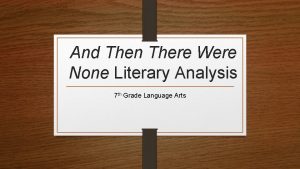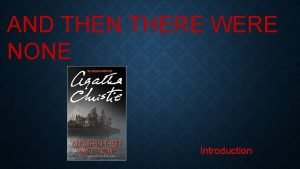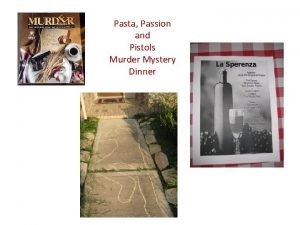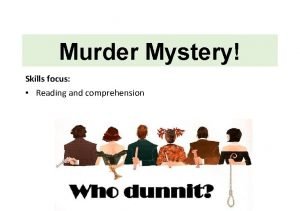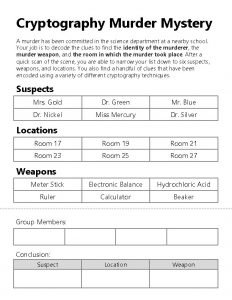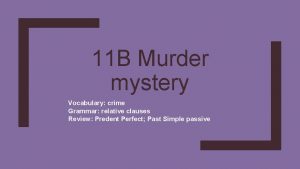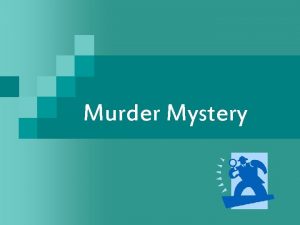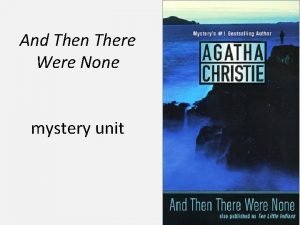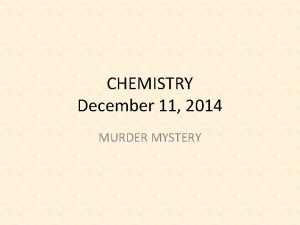Murder Mystery Fiction And Then There Were None









- Slides: 9

Murder Mystery Fiction And Then There Were None Intro

Mystery • A subgenre of fiction —can also be referred to as detective story • Usually involves a mysterious death or a crime to be solved. • Makes the reader consider morality and what is right or wrong

What’s it like? • In a closed circle of suspects, each suspect must have a credible motive and a reasonable opportunity for committing the crime. • The central character is usually a detective who eventually solves the mystery by logical deduction from facts fairly presented to the reader. • This classic structure is the basis for hundreds of variations on the form. (And Then There Were None is a variation)

Characteristics of Murder Mystery • Suspects: people suspected of committing the crime • Motives: the reason why someone would want to commit the crime • Evidence: Obvious clues about the crime are given to the reader

Characteristics Continued • Inference Gaps—mysteries, by their very nature, do not tell the whole story. It is up to readers to notice the gaps in the story and try to fill these gaps by using and connecting the information that is presented.

Characteristics Continued • Suspense—having to hold various possible conclusions at bay as you wait to see what happens; reader is expected to enjoy the suspense, and to read to find out what will happen.

More Characteristics • Foreshadowing— clues left by the author as to possible outcomes. • Red herring—a kind of foreshadowing clue that leads the reader to false conclusions.

Reader’s Job in a Mystery • The reader’s job is to put the puzzle pieces offered by the author together to figure out the mystery, to appreciate the detective’s craft, and to take moral satisfaction from the solution to the mystery. To do this, readers must notice and make meaning with the codes offered above, i. e. , they must notice the various forms of evidence and evaluate them; they must notice inference gaps and try to fill them.

And Then There Were None • “Ten Little Indians (Soldiers)” was a real nursery rhyme • The novel was written as a bet with her husband on who could write a better murder mystery…Christie won.
 And then there were none mystery elements
And then there were none mystery elements Literary devices in and then there were none
Literary devices in and then there were none And then there were none literary analysis
And then there were none literary analysis Characteristics of mystery flash fiction
Characteristics of mystery flash fiction Chapter 11 and then there were none
Chapter 11 and then there were none Misu pasta
Misu pasta Focus
Focus A murder has been committed
A murder has been committed Murder mystery vocabulary
Murder mystery vocabulary Cryptography murder mystery answers
Cryptography murder mystery answers

